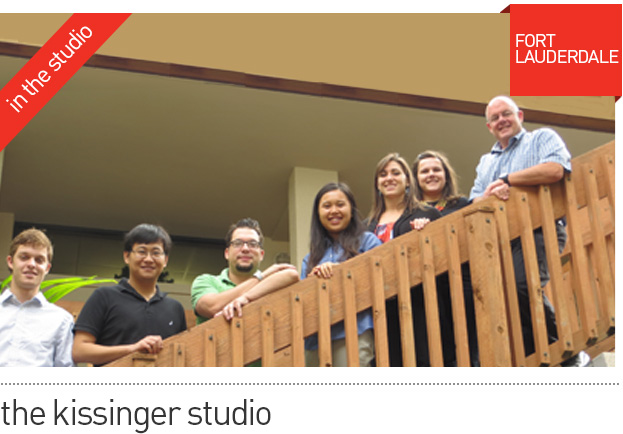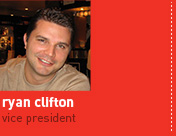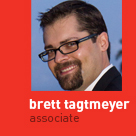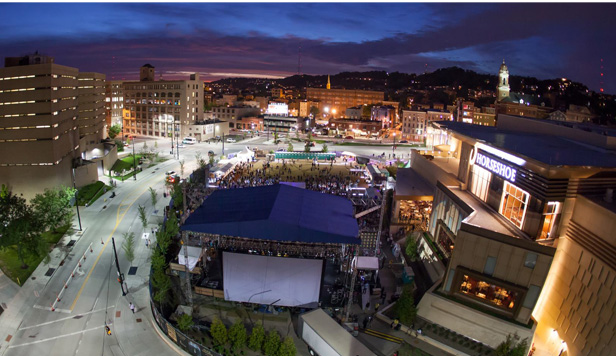

Since the inception of the field of anthropology, scholars have debated a definition for the word "culture" with a great number of diverging rationalizations. Some argue that the concept of culture is nebulous and the real driver is instead context. Whether one makes the semantic choice of culture or context, we know that today’s consumers are interested in fusing knowledge and education with the heritage and customs of the local community in the creation of great places.
At its best, cultural authenticity is based on one’s source for inspiration, an emotional connection and the choice of materials. Culturally-enriched design should respond to the beauty of the land, the people and traditions. It must also resolve the balance between “everyone’s the same” (usability, for example, is a fairly universal attribute) and “pay attention to the social details” (understanding how design fits into people’s lives). But what constitutes culturally celebratory design can run the gamut. Are developments satisfying the expectations of visitors or are they relying on commonplace for their appeal? What makes for authenticity in design?
Authentic design in a true sense provides opportunities to collaborate, to reflect. It is a seamless integration of nature, place, people and purpose and in doing so echoes the soul of the communities, destinations and public spaces in which they reside. To achieve this balance, EDSA designers visit the region, learn the historic context, explore the culture and discover the site’s value to base such experiences around.
In addition to sound universal planning strategies, good design results when the designer is attuned to essential sources of information and inspiration. For example, the needs and desires of the persons for whom the development is being created and the nature of locally available materials and craftsmanship. Additionally the site has a definitive impact on design. Site considerations include topography, solar orientation, prevailing winds and any existing natural or architectural elements. The surrounding landscape and city form are also important sources of inspiration for they create responsive feelings, forces and qualities that manifest themselves into unique designs. For EDSA, it is a way of working from the inside out that encourages us to maintain an attitude of reverence and respect, and not simply do what we find interesting.
We know that globalization, seen as the widening of one’s horizon of cultural experiences, has always driven man to go beyond his own limits, beyond the boundaries of his narrow reach. The trades of the first civilizations, the geographical discoveries, and also the colonization of people and territories are the confirmation that this represents a constant factor in our combined histories. It’s a new world, a new life and a new economy. It is for this reason that culturally celebrated design will continue to play a larger role in the development and adaption of the world’s natural and built environment.
For more information contact EDSA at communications@edsaplan.com or 954.524.3330.

It’s all about problem solving, infinite possibilities, idea visioning and re-perceiving places around the globe for the Kissinger Studio. Having been involved in award winning projects such as the Owensboro Riverfront in Kentucky, Pompano Beach Streetscapes in Florida and Valletta Waterfront in Malta, the team seeks opportunities to bring innovation and creativity to each assignment through broad conceptual gestures, design details and the implementation of their designs.
They understand what contributes and impacts a project’s success and have developed the expertise necessary for conceptual thinking, design detailing, permitting and construction documentation. Their design philosophy addresses functionality, aesthetic beauty,
social engagement and economic sustainability.
“We are proud of our holistic approach, expertise and a successful track record for getting projects built. We think about how people use spaces; and the project as a whole and form an opinion that is relevant. It is not just about the landscape architecture, it is about what it takes to make the project successful. That’s why clients hire EDSA.” - Paul D. Kissinger, FASLA, PLA
With the addition of two new team members, the Kissinger Studio is growing and evolving, with a unique blend of veteran expertise and young, fresh ideas.
For more information on the Kissinger Studio visit http://www.edsaplan.com/en/Team/Studios/Kissinger

Embracing challenges and continually enacting the influence a landscape architect has on the development of a project is what fuels Ryan’s love for the profession. Having had the opportunity to work on projects in the Caribbean, Latin America and Asia, he has acquired an understanding of the significance that history and culture play in planning and how it ultimately directs design. He enjoys researching a site’s historic practices, studying man-made and natural land uses and then collaborating with clients for the best possible outcome. With EDSA since his graduation from Oklahoma State University in 1999, Ryan has developed a strong sense for addressing site issues and resolving design challenges and then communicating the most desirable approach to clients. He has worked in the Fort Lauderdale office, for a time in Brazil and is currently part of the Baltimore Studio team. |

A graduate from the University of Miami, Ayanna began her studies in architecture but she soon realized she preferred large scale visioning over the building and hardscape focus. Working on projects that improve quality of life is what keeps her motivated. Her involvement with the pro bono Gratigny Park project in Miami has confirmed her love for the profession. Focused on community well-being, residents will benefit from a social common space and watching their children play in a safe environment. Since joining the firm in 2011 as part of the Gray Studio, Ayanna has concentrated on master planning, detailed site design and construction related services for college campuses incorporating imagination and intuitiveness with a creative confidence. A mom-to-be, Ayanna has strong ties to her Jamaican roots and enjoys how culture can and should be interwoven into a development. |

Brett’s passion for travel originated with his Olympic training career as a marksman. In this endeavor he experienced the support of teammates and quest for excellence. He came to realize how the team composition lifts and elevates the performance of an individual to heights never before achieved. This collaborative demeanor coupled with a love for the outdoors, travel and art sparked his interest in landscape architecture. With an undergraduate degree in biology and a Master’s in Landscape Architecture, Brett’s designs are a fusion of nature, culture and sustainability. First joining EDSA as an intern and now a permanent member of the Lalli Studio, his latest trip to China was a highlight in his professional career where the client wanted the team to become immersed in the local character of the city. He looks forward to traveling to new places and evolving his design skills. |



The Horseshoe Casino Cincinnati has set a new standard for downtown casinos. Planned on an urban infill site, adjacent to the central business district and famous riverfront, it is not the typical box structure designed to keep visitors inside the casino. Instead, the casino has been turned inside-out through a series of physical and visual connections that are woven into the fabric of the city.
This new definition of a truly urban casino is strengthened by a cohesive design palette that combines rich character details, varying textures and contrasting colors to create an outdoor entertainment venue that celebrates tourists and residents. With strong support by this very active, urban-focused community, EDSA, Friedmutter Group and Rock Ohio Caesars LLC ensured the overall design space not only aided the casino but also benefitted the surrounding neighborhoods and region. The site layout coupled with improved pedestrian accessibility has helped rejuvenate this part of town and helped employ thousands.
Horseshoe Casino incorporates street-facing, windowed retail and restaurants as well as an outdoor, public performance plaza, an industry first. The one acre landscaped green space at the casino's main entrance creates a natural connection with the downtown and nearby neighborhoods. This iconic event plaza called “The Shoe”, anchors the central business district by defining a formal external space in harmony with the architecture. Strong, clean lines, organized landscape forms and contrasting materials respect the vernacular balance and context. Cutting edge technology and extensive planning related to event staging and infrastructure produced a flexible, programmed outdoor room that raises industry standards for entertainment spaces. The event lawn is designed to host year-round events and serve as a symbolic gateway open to the public.
Development of the Horseshoe Casino sparked additional public/private investment with more than $26 million in infrastructure improvements that addressed the city's east entrance as well as streetscape and lighting enhancements. With EDSA’s oversight and design services, the surrounding streetscape (including pocket parks) was formed as a result of street reconfiguration, serving to amplify the public’s presence and walkability of the area. The rhythmic landscape patterns bring a human scale to the overall design and provide for the interaction between public realm spaces and the adjoining neighborhood with the Horseshoe Casino. Gradient variation of concrete color bands in the public walkways and the urban plaza allow guests to experience varying points of view, scale, shape, direction and sentiment of the exterior room.
Projected to attract nearly 6 million annual visits to the downtown, Horseshoe Casino Cincinnati is a high-profile addition to the city’s impressive sports, entertainment, music and cultural destinations. Since its inception, Cincinnati has embraced the $400 million new development for creating nearly 1,700 casino jobs, igniting regional development and increasing tourism. The investment transformation is a result of the casino being developed to maximize connectivity and economic impact with the downtown while upholding Caesars’ world-class operating standards.
EDSA led the team coordination between the site and building consultant team while providing conceptual design, detailed design and construction administration services. Horseshoe Casino Cincinnati held its grand opening on March 4, 2013. http://www.edsaplan.com/en/Portfolio/Horseshoe-Casino-Cincinnati

A number of urban areas across the globe have become ‘food deserts’ where people do not have access to freshly grown, local food. This coupled with growing concerns of obesity, the economy and climate change, locally sourced produce is a unique way to support good health, local communities and our planet. The City of Baltimore, Real Food Farms and Farm Alliance of Baltimore City is united by practices and principles to increase the viability of urban farming and improve access to fresh, natural and healthy foods. These initiatives include urban farming on underutilized properties throughout the city and mobile farmers’ markets. The most recent addition – a new farmers’ market that caters to downtown professionals allowing them to buy locally-grown produce on their lunch break – is located just a few blocks from EDSA’s Baltimore Office in the recently renovated Pratt and Light Plaza.

In a city known for its special combination of urban life and easy access to the great outdoors, Oslo is home to the Vigeland Sculpture Park in the Frogner district. This unique 30 hectare park represents the life work of Gustav Vigeland (1869-1943) with more than 200 sculptures that range in topic from humans in everyday situations to highly abstract works. Symbolic in their design, the bronze, granite and cast iron sculptures recount the circle of life from inception though old age. Under agreement that city leaders would keep the park open 24/7, Vigeland donated the open space to the people and was also responsible for the design and architectural outline of the park which illustrates a strong axial organization. It was a pretty amazing thing when first conceived and it now stands as a monumental artistic creation with a human message.

With thanks to our clients and collaboration with fellow consultants, we are proud to announce the following EDSA projects that have received awards for planning and design excellence from the Florida Chapter of the American Society of Landscape Architects (FLASLA):
Award Of Excellence:
Luštica Bay Resort, Radovici, Montenegro – Planning & Analysis
Award Of Merit:
Mar Menor Golf Resort and Spa, Murcia, Spain – Residential
Smothers Park, Owensboro, Kentucky – Open Space
Award Of Honor:
Pompano Beach Streetscapes, Pompano Beach, Florida – Open Space









